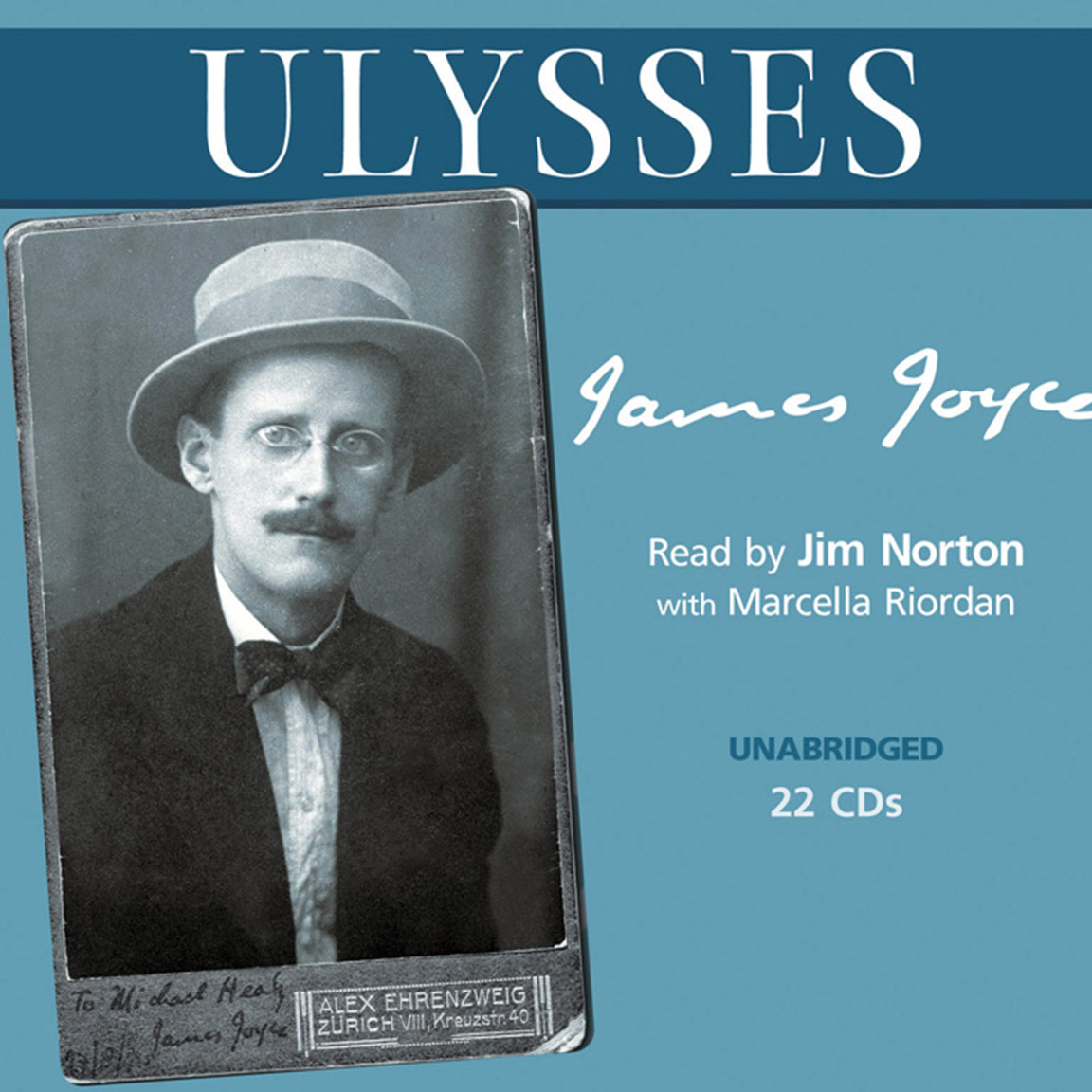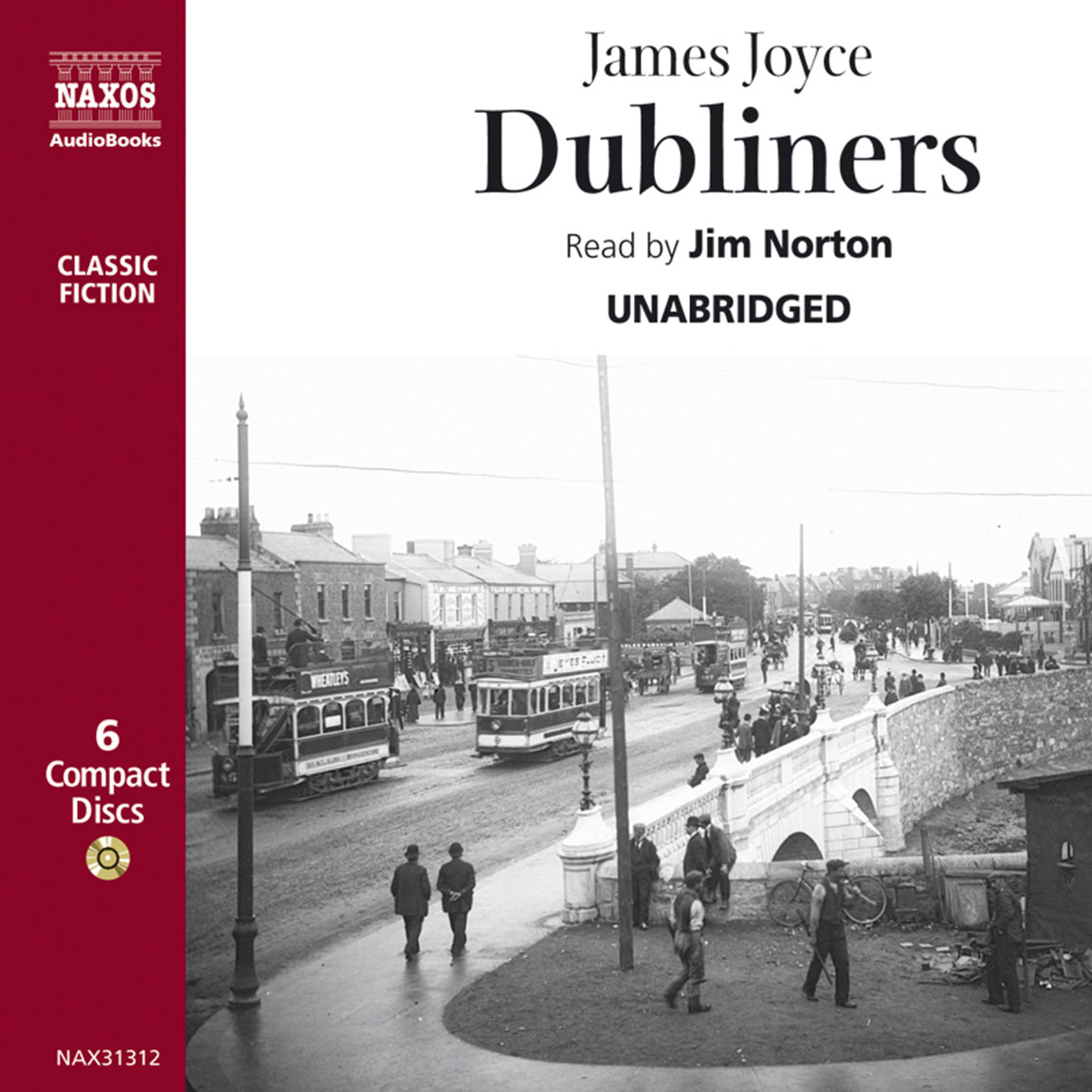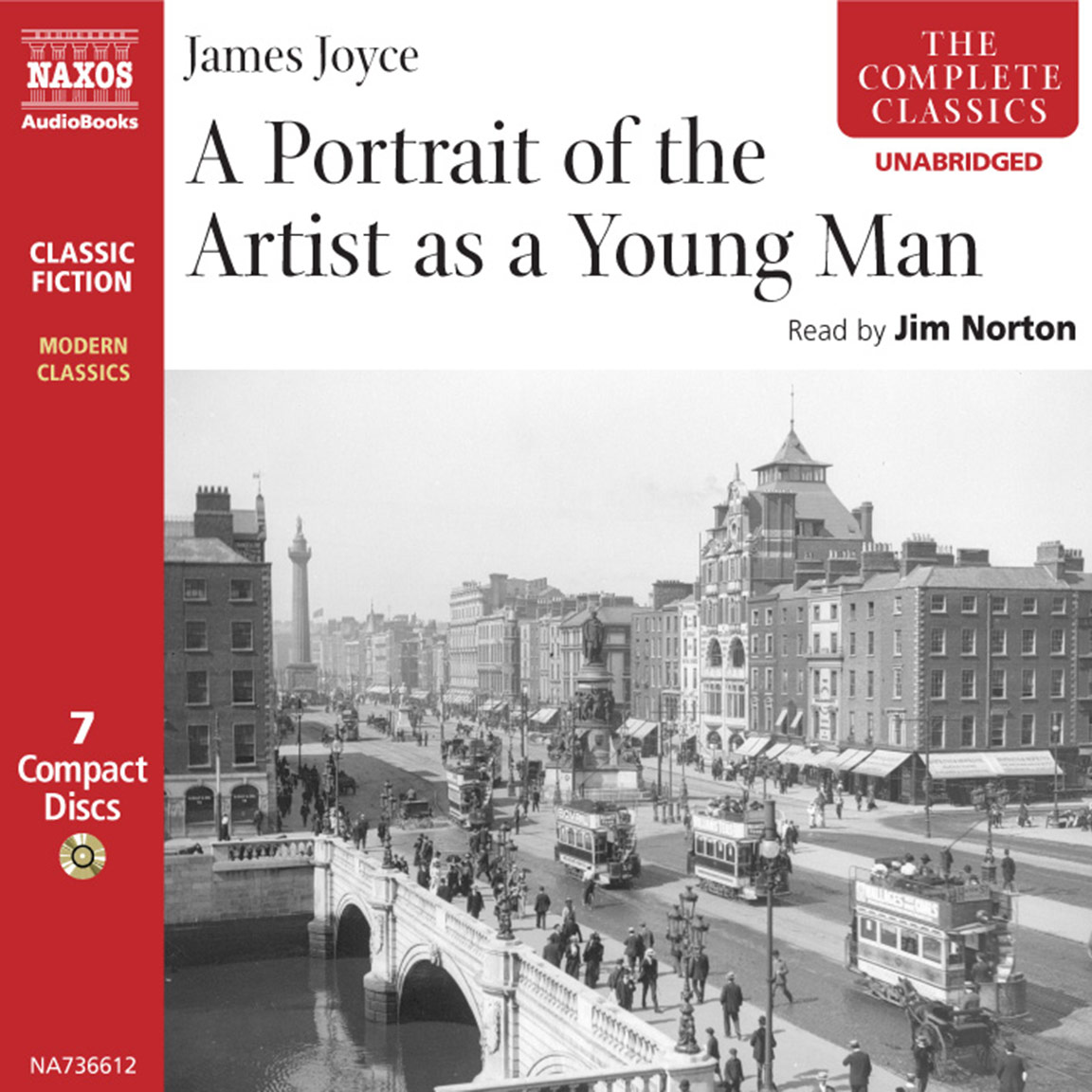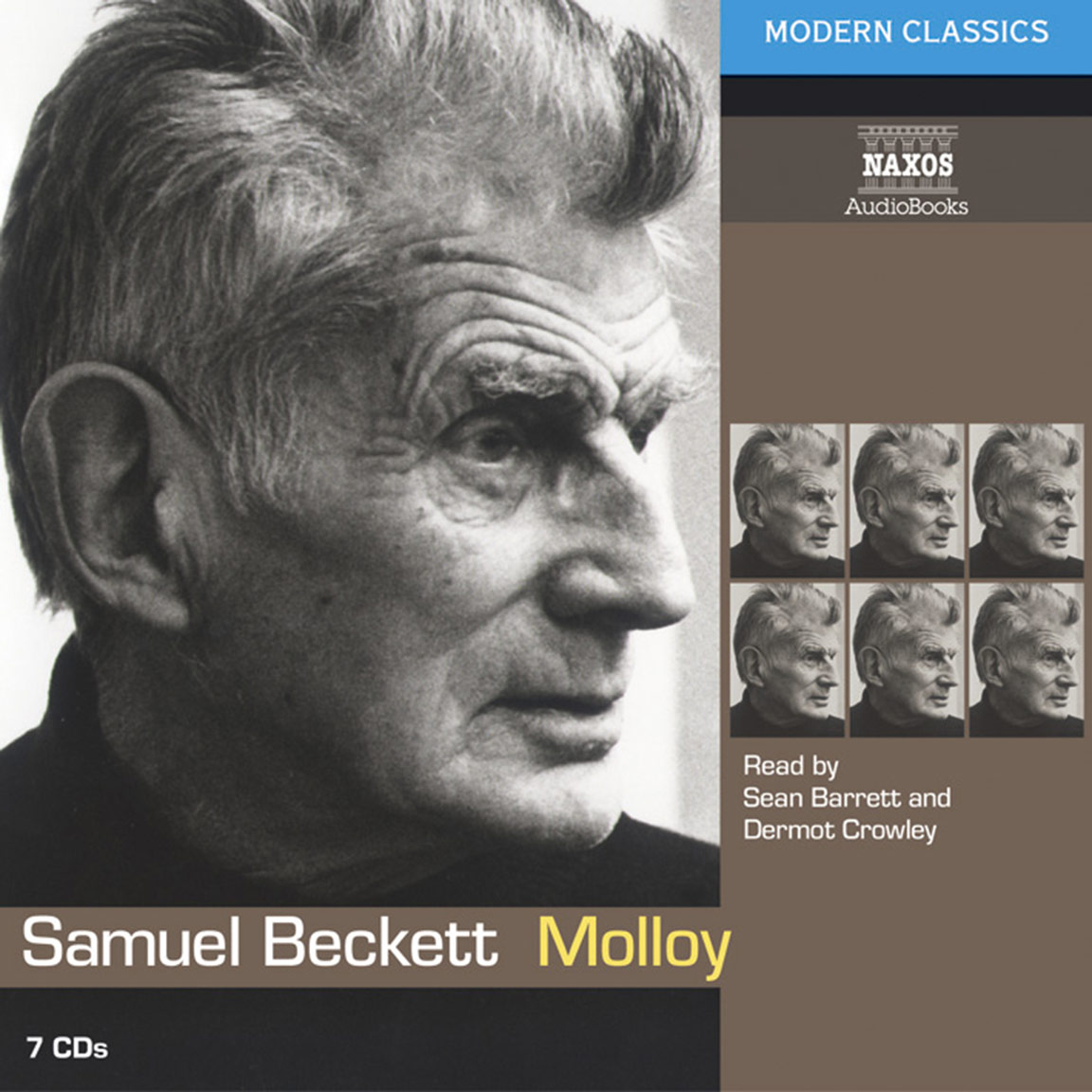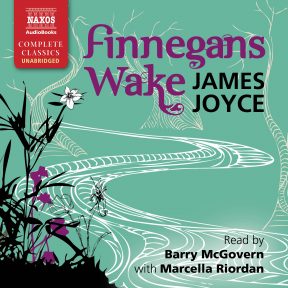
Audio Sample
James Joyce
Finnegans Wake
Read by Barry McGovern with Marcella Riordan
unabridged
‘Riverrun past Eve and Adam’s, from swerve of shore to bend of bay, brings us by a commodius vicus of recirculation back to Howth Castle and Environs…’ So starts Finnegans Wake, the greatest challenge in 20th-century literature. Who is Humphrey Chimpden Earwicker? And what did he get up to in Phoenix Park? And what did Anna Livia Plurabelle have to say about it? In the rich nighttime and the language of dreams, here are history, anecdote, myth, folk tale and, above all, a wondrous sense of humour, coloured by a clear sense of humanity. In this exceptional reading by the Irish actor Barry McGovern, with Marcella Riordan, the world of the Wake is more accessible than ever before.



-
Running Time: 29 h 18 m
More product details
Digital ISBN: 978-1-78198-366-9 Cat. no.: NA0503 Produced by: Roger Marsh Edited by: Sarah Butcher Text: © 1975 The Trustees of the Estate of James Joyce BISAC: FIC004000 BIC: FC Released: June 21 -
Listen to this title at Audible.com↗Buy on CD at Downpour.com↗Listen to this title at the Naxos Spoken Word Library↗
Due to copyright, this title is not currently available in your region.
You May Also Enjoy
Reviews
Audiobook of the Week
I loved James Joyce’s Ulysses for its lilting humour, its density of literary reference and glorious puns. But I was baffled by Finnegans Wake, especially on flicking to the end to find that its last words were the missing first half of the sentence that begins the book. It is a literary Everest that Joyce took 17 years to write, only for it to remain largely unvisited 82 years on.
It has taken digital audiobooks to make it not only conquerable but hugely enjoyable in its entirety. I recommend getting an ebook version (Kindle’s is only 49p), then watching the words as you listen for half an hour a day; the audio’s PDF and chapter heads sketch the plot. That way you can revel in the ocean of neologisms, portmanteau words, puns and double entendres that Joyce frolics among like a dolphin on speed. You can use an annotated text such as finwake.com, but I found it too hiccuppy to be glancing down at the footnotes.
Just go with the flow, enjoying Barry McGovern’s boisterous but doomed hod-carrier Finnegan and his friends warbling Irish ballads and Marcella Riordan voicing Anna Livia Plurabelle as wonderfully as she did Molly Bloom on Naxos’s Ulysses. All praise to the producer Roger Marsh for bringing out the comedy and the literary depths of this legendary book.
Christina Hardyment, The Times
Winner of AudioFile Earphones Award
‘The Wake’ is one of the most incomprehensible of classic novels, so not even a bravura performance like this one can clarify the language and story. The very useful companion booklet by Naxos provides some orientation, but the listener really needs a working knowledge of French, Italian, German, Latin, various pidgins, Irish history, the geography of Dublin, and Roman Catholicism, for a start, to follow along easily. Having a copy of the book open while listening would help. But Barry McGovern, who narrates most of the audiobook, and Marcella Riordan deploy a marvellous repertoire of voices and accents, including some singing, so that the experience of listening does not require any (or very much) understanding. You can think of it as an opera in a language with which you are not familiar. Moments of clarity come and go, but, in general, you are merely submerged in a world of great accomplishment and beauty.
D.M.H., AudioFile
The first ever unabridged recording of James Joyce’s Finnegans Wake is a monumental achievement by Naxos AudioBooks. Before its publication in 1939, Joyce had spent 17 years on this notoriously impenetrable work. Since then it has sparked dedicated study – and derision. Many serious readers have abandoned attempts to understand it – referred to within the Wake itself as a worthless ‘pinch of scribble’. But here, Barry McGovern, an experienced performer of Joyce, and Marcella Riordan (Molly Bloom in the Naxos recording of Ulysses) are so spectacularly brilliant with the sounds and rhythms of the language that words seemingly incomprehensible on the page magically communicate enough for the listener to enter the whole work.
It was perhaps his decade-long problems with failing eyesight that lie behind the astonishing musicality of Joyce’s writing, which is brought out delightfully by the narrators with their Irish intonation, and is further enhanced by the direction of the composer Roger Marsh, who has chosen musical extracts as nuanced as the text, including one of his own composition.
So what are these 29 hours about? Mr and Mrs Porter live above a pub near Dublin (drinking is in the fabric of the Wake). They have twin boys (various twins will recur) and a daughter, Issy. Asleep in their dream world, the family morphs into various incarnations which spawn and spread: Issy into the Tristan and Isolde legend; Mr Porter into both the hod-carrier Finnegan, who fell to his death when the ‘difflun’s kiddy’ (devil’s child) removed a plank from the scaffolding, and also into Humphrey Chimpden Earwicker; and Mrs Porter into Anna Livia Plurabelle, who finally dissolves into the ‘rivering waters’ of the Liffey.
The digressive whole has a structure following the 18th-century philosophy of Giambattista Vico, who saw history as cyclical, with each cycle ending in a thunderclap before beginning anew. Thus the final unfinished sentence of the Wake: ‘A way a lone a last a loved a long the’ is the beginning of the first unbegun opening sentence: ‘riverrun, past Eve and Adam’s, from swerve of shore to bend of bay’. Joyce marks the cycles with 100-letter ‘thunderclap’ words such as Lukkedoerendunandurraskewdylooshoofermoyportertooryzooysphalnabortansporthaokansakroidverjkapakkapuk – which McGovern reads seamlessly.
What Joyce calls this ‘commodious vicus of recirculation’ ties in with other themes, including Fall and Resurrection in all its forms in myth and history. So, for example, Finnegan rises from his wake, crying: ‘Did ye drink me doornail?’ (‘did you think me dead as a doornail?’) while Earwicker’s fall from grace for the unresolved indiscretion he committed in Phoenix Park runs throughout, entwined with myriad puns on Humpty Dumpty, Lewis Carroll being Joyce’s soulmate.
Even if many of the themes are elusive on first listening, the language explodes. Joyce’s wry humour beams out from portmanteau words – what sexual shenanigans are in ‘grandgoosegreasing’? He revels in rhyming, chiming, alliterating, kenning and coining, as in his ‘gossipaceous’ washerwomen, or ‘reekierags or sundy-choses’ (everyday or Sunday clothes). Complex multi-layered puns proliferate throughout, as in ‘The Ballad of Persse O’Reilly’, which, remembering the French for earwig is perce-oreille, tells the tale of Earwicker. Words are freighted with a rich hinterland of associations, rhythm and internal rhymes: what sounds and imagery there are in the gulls ‘overhoved, shrillgleescreaming’, witnessing Tristan and Isolde at sea. ‘All the birds of the sea they trolled out rightbold when they smacked the big kuss of Tristan and Usolde’.
Anna Plurabelle’s epilogue could have been addressed to Joyce himself: ‘Every letter is hard but yours sure is the hardest crux ever.’ But this recording makes it worth the struggle.
Rachel Redford, The Spectator
Booklist Starred Review
Seventeen years in the writing, Joyce’s monumental 1939 work Finnegans Wake contains multitudes, including what could be taken as a tacit argument for the audiobook: ‘Let us leave theories there and return to here’s here. Now hear.’ In navigating Joyce’s enigmatic tongue-twisters and scant punctuation while breathing sense and sensuality into every word and coinage of his prismatic polyglot text, veteran actors (and native Dubliners) Barry McGovern and Marcella Riordan achieve the seemingly impossible. Whether listeners read along, riddling out the allusions and deciphering the underlying story of the Earwickers: Humphrey Chimpden, Anna Livia Plurabelle, Shem, Shaun and Isobel, or simply surrender themselves to the irresistible flow of Joyce’s language as it pulses, swirls and eddies its meandering course, this recording provides unprecedented access to an incomparable yet forbidding masterpiece. Both narrators’ rich voices, varied and specific characterisations, and innate lyricism pair well with Roger Marsh’s musical direction. The resulting production conveys the mystery, the awe, and above all the humour and sheer expressive joy that, simply put, make Finnegans Wake so much fun. Set your alarm to it in the morning, fall asleep to it at night, and just see what happens to your dreams.
David Wright, Booklist
Booklet Notes
Even before James Joyce published Finnegans Wake in 1939 it would have been anticipated as a novel of great importance. After all, the author of Dubliners, A Portrait of the Artist as a Young Man and Ulysses Ahad been working on it for 17 years. What’s more, Joyce, with his talent for generating both publicity and an atmosphere of mystery, had already published short sections of the Work in Progress as separate stories, apparently with the idea of giving his public a ‘taster’ of what was to come – and also providing some much needed income along the way.
These ‘tasters’ may, as Anthony Burgess suggests, have led his public to expect a work of almost childlike charm. ‘The Ondt and the Gracehopper’ is a parody of a fable by La Fontaine (The Ant and the Grasshopper) written in difficult but amusing language reminiscent of Lewis Carroll’s Jabberwocky. ‘The Mookse and the Gripes’ – one of the most difficult passages in the novel – is also deceptive because of its fairy-tale style. It begins: ‘Eins within a space and a weary wide space it wast, ere whoned a Mookse…’, and it ends: ‘But the river tripped on her by and by, lapping as though her heart was brook: Why, why, why! Weh, oh weh! I’se so silly to be flowing but I no canna stay!’ Such charm may allay the unease of the reader who on first reading (but possibly also on second and third) might find it hard to decipher the precise meaning of these fables.
Another section published separately – in which two washerwomen gossip about the exploits of Anna Livia Plurabelle – (‘O tell me all about Anna Livia! I want to hear all about Anna Livia! Well, you know Anna Livia…’) – is imbued with such musicality and so many delicious watery puns, including references to hundreds of the world’s rivers, that a reader may be less concerned to know the precise background to the gossip. For the language takes us with it, and as the washerwomen turn into tree and stone on the river bank and night falls, the poetic conclusion is satisfying in itself: ‘Tell me, tell me, tell me, elm! Night night! Telmetale of stem or stone. Beside the rivering waters of, hitherandthithering waters of. Night!’
As Samuel Beckett wrote, in his essay Dante… Bruno. Vico… Joyce: ‘His writing is not about something; it is that something itself… When the sense is sleep, the words go to sleep… When the sense is dancing, the words dance.’
‘Certainly, an end
is implied in the
notion of a wake –
but a beginning,
too, for after
sleep, we wake.’
And yet the novel certainly is ‘about something’, and on its publication there must have been rather widespread dismay when enthusiastic fans of Ulysses discovered how difficult Joyce had made it for them to discover what that ‘something’ might be. Now, at least there was a title – Finnegans Wake – and from this title alone a number of deductions could be made. One could assume that these words had more than one connotation. In this case all the analyses lead in a similar direction. Finnegan, a common enough Irish name, contains within it the suggestion of an end and a beginning (Fin/again). It might also recall the popular children’s round concerning Michael Finnegan: ‘…he grew whiskers on his chin again; the wind came up and blew them in again; poor old Michael Finnegan, begin again…’
Certainly, an end is implied in the notion of a wake – where the lamentation (or merrymaking) beside the corpse is intended to escort the soul to its afterlife; but a beginning, too, for after sleep, we wake. And some readers may be familiar with an old popular Irish American ballad called Finnegan’s Wake, which had been a favourite of Joyce’s brother Stanislaus when, as youngsters, they joined in the family musical evenings.
The fall and resurrection of Finnegan the hod-carrier is a kind of modern myth with obvious resonances in Joyce’s novel. Clear references to the song, and paraphrases from it, are to be encountered throughout the book: ‘Wan warning Phill filt tippling full, his howd feeled heavy, his hoddit did shake…’ But at the same time, the mythical hero of this novel is another ‘Finn’ – the legendary Irish giant Finn MacCumhal. According to Richard Ellman, Joyce later informed a friend: ‘He conceived of his book as the dream of old Finn, lying in death beside the river Liffey and watching the history of Ireland and the world – past and future – flow through his mind like flotsam on the river of life.’
Nothing less than the history of Ireland and the world, then, is the subject of Joyce’s novel. But there is yet another incarnation of hero Finn – a rather more immediate fictitious protagonist – one Humphrey Chimpden Earwicker, publican, a lumbering fellow with a stutter, a hump on his back and a rather disreputable past, for he may have been involved in some sexual impropriety in Dublin’s Phoenix Park. His pub, the Mullingar, beside the Liffey at Chapelizod, is also home to his wife Anna Livia Plurabelle, their two sons (Shem and Shaun) and their daughter Isobel (or Isolde).
In the novel’s flotsam and jetsam dreamworld, however, Earwicker, Anna and the rest come and go in a shifting landscape which sometimes defies logic. Their presence is often signalled by the appearance of their initials, HCE and ALP. So we encounter Earwicker, for example, as ‘Howth Castle and Environs’, or ‘A hand from the cloud emerges’; and Anna Livia appears as ‘Amnis Limnia Permanent’ or ‘And the larpnotes prittle’. And it is no coincidence that their pub is in the Dublin suburb of Chapelizod, an anagram of HCE, ALP and Izod (Isolde). The sons, Shem and Shaun, are twins and yet opposites. Shem, like Joyce himself, is a ‘penman’, an artist and man of ideas. His brother Shaun is more practical and less imaginative – a postman, antagonistic towards his more famous brother, who he considers a charlatan and degenerate.
On one level these brothers are indeed James and his brother Stanislaus, who was of the opinion that Finnegans Wake represented ‘the witless wandering of literature before its final extinction’. On another level, though, they represent all archetypal opposites – active and passive, positive and negative, Yin and Yang, East and West – as well as, for Joyce, the doctrine of the 16th-century philosopher Giordano Bruno of Nola, which sees unity in the reconciliation of opposites. Bruno the Nolan is encountered several times in Finnegans Wake, sometimes playfully confused with the Dublin booksellers Browne and Nolan.
A more important philosophical background to Joyce’s dream history, however, is the Neapolitan Giambattista Vico, who divided human history into recurring cycles – theocratic, aristocratic and democratic ages followed by a ‘ricorso’, or return. These four recurring divisions of time allow us to see history as circular, like the seasons of the year or the human life cycle – birth, marriage, death, burial and resurrection. Thus, Joyce structures his entire book in this way – three large chapters and a shorter fourth one (Ricorso), while individual sentences often refer to the Viconian cycle: ‘The lightning look, the birding cry, awe from the grave, everflowing on the times’/ ‘A good clap, a fore wedding, a bad wake, tell hell’s well’. According to Vico, each cycle is initiated by a thunderclap (a big bang?), and Joyce borrows this idea, transforming the thunderclap into a series of 100-letter words.
Central to the entire edifice of Finnegans Wake is Dublin itself – along with the Liffey and Howth Head – just as in Ulysses. Seen from across the bay of Dublin, Howth Head looks like a person asleep or laid out for a wake. Some refer to it as the sleeping princess, but for Joyce it is the sleeping (or dying) Finn MacCumhal. The River Liffey, Anna Livia, is like the cycle of life itself. From its source in the Wicklow Hills, the Liffey trickles and grows for 80 miles before flowing past HCE’s pub and the Phoenix Park, with its monument to Wellington the Iron Duke, bringing life to the city of Dublin (Baile-atha-Cleath) and water to the Guinness Brewery (‘Guinness is good for you’, as Joyce regularly reminds us). From the city she passes out into the sea where she can be absorbed before being taken up into the atmosphere to fall again as rain on the Wicklow Hills.
Famously, Finnegans Wake begins and ends in mid sentence: ‘A way a lone a last a loved a long the’ – leading us back to ‘riverrun, past Eve and Adam’s…’
Notes by Roger Marsh





